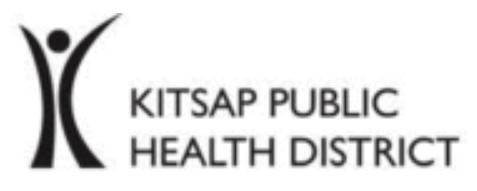For the moment, Kitsap County is managing the COVID-19 pandemic, but worries on the horizon, from outbreaks in long-term care facilities and increased movement among residents, could change that picture in a flash.
As the Kitsap Board of Health convened for its regular monthly meeting, COVID-19 was, of course, the topic of discussion for health officials and local leaders as the county navigates new regulations and awaits additional word on the possibility of moving into a new phase of the governor’s “Safe Start” plan.
Dr. Susan Turner updated the board at its Tuesday morning meeting with the news that, at present, hospitals have good capacity to handle patients and that there were five hospitalizations as of July 2.
“They are reporting their capacity every day and using the metrics developed by the governor’s office … they are reporting good capacity at this time,” Turner said.
But with outbreaks at long-term care facilities — outbreaks are defined as two or more non-household cases epidemiologically linked within 14 days in a workplace, congregate living or institutional facility — the situation could quickly change. Especially since residents of long-term care facilities tend to live in close quarters and are considered high-risk.
Kitsap as a whole has seen a spike in cases, and although a rise from the zero to two cases per day that the county was experiencing during the strictest parts of the “Stay Home” orders, cases have returned closer to the peak of late March.
“When we moved to phase 2, we knew that contacts between people would increase,” Turner said.
The county reported 34 cases from June 1 to June 19, the date on which local officials filed the application to move on from phase 2 to phase 3. However, since that date, there have been an additional 68 new confirmed cases through July 3. The county’s application was subsequently put on pause, and then the entire state was halted from moving forward until at least July 16.
The biggest change in moving to phase 3 is that gathering of people from outside a specific household increases ten-fold from five to 50.
“We’re assuming that we will need to provide a data update before we get approval to move to phase 3,” said health administrator Keith Grellner said. “So we’re preparing for that.”
County prepares for face-covering requirements
A new order from the governor’s office took effect this week, requiring businesses to turn away and not serve goods to people who are not wearing some sort of face covering, barring an exception for legitimate medical reasons.
Mask-wearing has the support of Kitsap officials, who were thankful in noting at Tuesday’s meeting that it has not become a political issue here as it has elsewhere.
“We support masks,” said county commissioner Ed Wolfe. “It may be not a popular thing around the state, [but] we support masks.”
Inslee’s order gives businesses more room to deal with folks who do not wear a mask, though it has been noted that enforcement of the law will be problematic.
The mandate is punishable as a misdemeanor, but there are barriers to enforcement. Under ADA rules, it’s illegal to ask a person about specific medical issues that might prevent them from wearing a mask, making it difficult to actually build a criminal case against a person.
Grellner said it’s “unrealistic” to expect law enforcement to be able to answer every call for every complaint of a mask violation. Though he understood the frustration of seeing some people not in compliance while the vast majority take care to wear a mask in public, Grellner said the best thing people can do is simply choose to do the right thing — keep moving and keep proper social distance to protect themselves.
Kitsap now tracking active cases
The county has added active cases to its daily update this month, a number that currently stands at 22. This represents the number of cases that county officials and contact tracers are following each day with phone calls. Recovery data is more difficult to track and would require a much larger workload for the already-overburdened public health staff.
“[It’s] so that people know how many active cases we’re currently working on in our community at any given time,” Turner said. “This is a number that is much easier to be updated.”
A case remains active for about 13 days unless the person still as symptoms, in which case tracers follow the case until symptoms are considered “mild.”
“Those [are the] cases that our investigators reach out to every day to help them maintain their isolation at home,” Turner said. We follow those cases … until they are able to be released — and be informed that they can now be released from their isolation.”
Close contacts of the infected person are also followed for 14 days. Turner noted that close contacts in positive cases have risen in recent days, meaning each infected person is in closer contact with a larger number of people.


